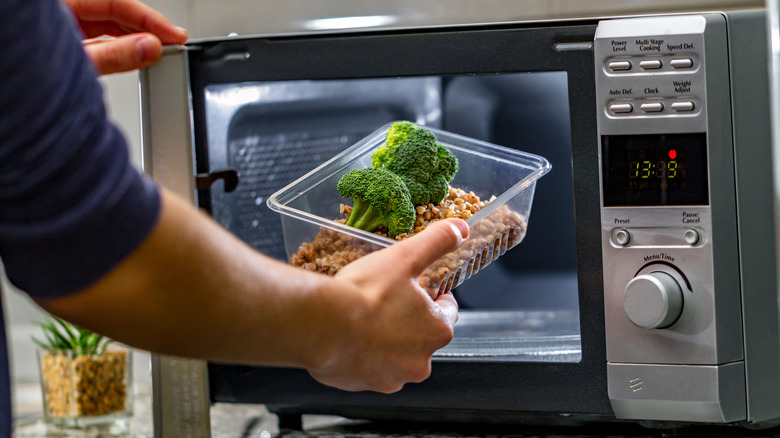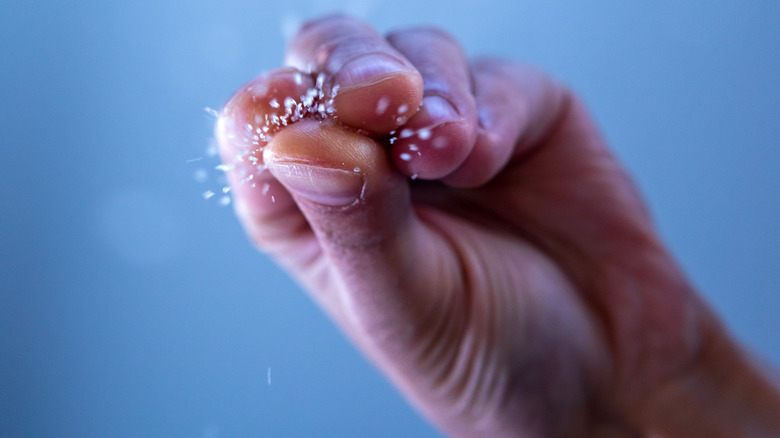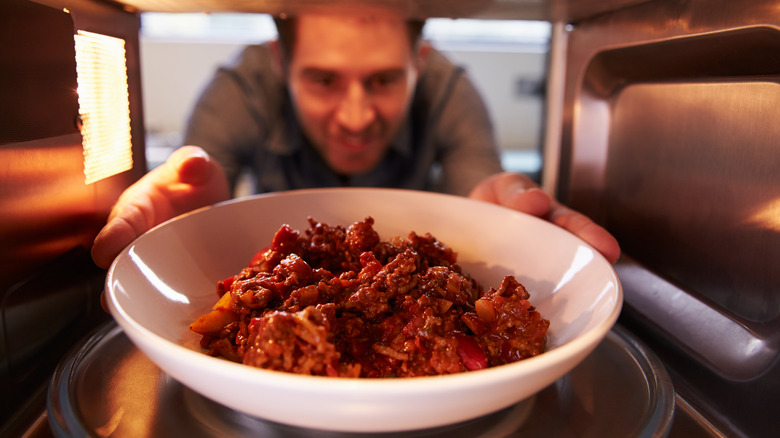Why You Should Never Salt Your Food Before Microwaving It
If ever there was a superhero for the culinarily challenged, it must be the microwave. It's the quick-fix meal-maker for those of us who cringe at the thought of slow cooking or continual stirring. Just pop in a plate, push a button, and it's done, right?
Well, not so fast. Despite its apparent simplicity, microwaving is more complex than we accredit it. Microwaves work by creating an electromagnetic field that causes water molecules in food to vibrate, thereby creating heat. Think of it like a dance floor: when the music plays, everyone starts moving, and the temperature heats up quickly. You could be using your microwave incorrectly without understanding the critical role of electromagnetic action.
One of the ways you can sabotage your convenient cuisine is by salting your food before heating. Uniform heat distribution is critical to achieving the best food quality out of your microwave. Since salt affects heat dispersion upon water, it can leave cold (or dry) spots in your food and a frown on your face.
Salt creates uneven heat distribution in your food
A microwave's electromagnetic energy creates heat by forcing molecules within the food to move and collide very quickly. In the case of salt, its two constituent parts (sodium and chloride) create heat energy. Because those components absorb energy very efficiently, they turn that energy to heat in a flash.
For your food, it means salted foods will heat quickly on the outside, where the microwave energy reaches the food first. Those energized salt molecules hoard microwave energy and create localized hot spots. As a result, the food's interior receives only the remnant energy waves, staying relatively cool. Research dating back decades studied this phenomenon in the context of rising rates of food-borne illness since salty food's interior may not get hot enough to kill pathogenic bacteria in the microwave.
This temperature phenomenon occurs whether the salt is incorporated into the food (like canned soup) or sprinkled on top. If it's processed food, you could look for a lower-sodium version, which would heat more evenly. If it's fresh food, add the salt after heating.
Smart microwaving strategies
Aside from the salt effect, all microwave users should know a few tricks to achieve optimal heating and cooking. First, stir often to keep the heat build-up evenly distributed; otherwise, the exterior will overcook before the interior finishes cooking. Second, since heat forces water to evaporate, you'll need to moisturize the surface of your food to keep it from drying out. You can use a microwave dome cover to catch and recycle the steam or lay a damp paper towel on the food during cooking.
And of course, some foods should not be microwaved at all, so choose your fare wisely. For example, bread is a no-go since they become tough and dry, while mixed-texture dishes like casseroles or stuffed peppers will heat unevenly due to the varying water content of the ingredients. Foods with low water content are especially prone to turning into Styrofoam. I'm looking at you, leftover fries.
The USDA recommends heating leftovers to an internal temperature of 165 F to kill off possible food-borne bugs that could make you sick. Preventing food waste is never worth getting sick over. With a basic understanding of microwave science and just a bit of coddling, you can enjoy a surprising variety of foods cooked right in your microwave.


